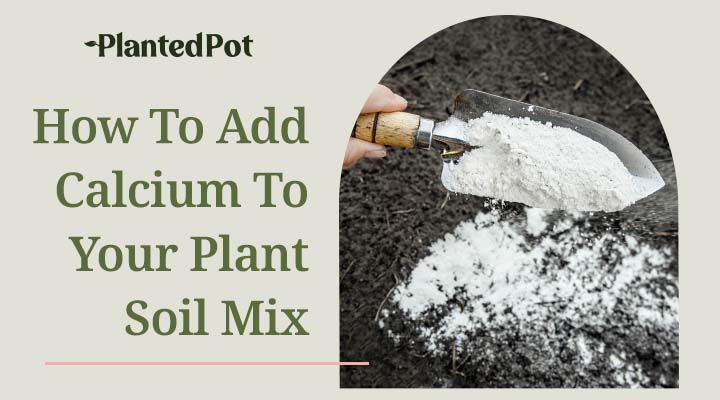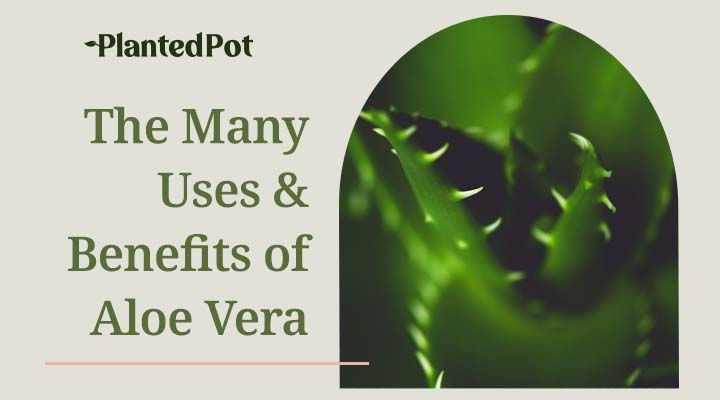
Indoor Palms: The Best Palm Plants For Your Home
Home / Indoor Palms: The Best Palm Plants For Your Home
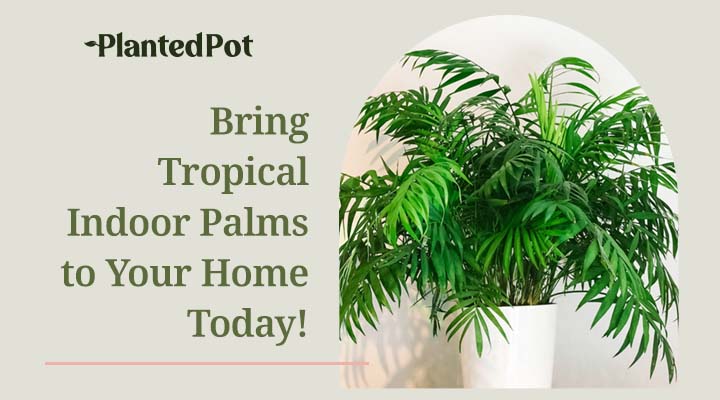
Indoor Palms: The Best Palm Plants For Your Home
- Olivia Richman
- June 17, 2021
- 2:30 pm
- No Comments
What is more vibrant, tropical, and fun than indoor palms? These unique plants are the perfect addition to any home that’s looking to feel like a magical getaway. Though some require a bit more care than your regular old houseplant. Indoor palms bring a sense of color and excitement to any room they’re in. So, let’s take a look at some popular indoor palms you can find that may be right for you!
What is an Indoor Palm?
When you hear “palm” you probably picture a tall palm tree lining the streets of Los Angeles or Miami. But there are actually multiple varieties of palm plants, including ones that can thrive inside your home!
Indoor palms are simply palm plants you can grow in your home with the right care and environment. Though they can be more expensive and high maintenance than other indoor plant species, indoor palms will make quite an impact on any decor they are in. They elicit a feeling of escape and comfort thanks to their association with tropical getaways.
Can Palms Survive Indoors?
Yes, definitely! While you usually see palms outside, there is an abundance of palms that will thrive in your home with the right care. One of the most important things to keep in mind about caring for indoor palms is their size. Most palms can grow pretty tall. If you have low ceilings, the palm’s height could be an issue. Luckily palms grow notoriously slow. The height of this trees can also be slowed down though by withholding larger pots from the palm, making them a more manageable size for longer.
Palms can easily adapt to low-light conditions, making them hardy enough for indoor living. They need loose, porous soil and good drainage. Palms don’t like being waterlogged although they do enjoy moist soil.
Keep your home nice and toasty, no lower than 50 degrees Fahrenheit. There are only a few palms that can survive in cold temperatures. While the Parlor and Kentia trees are of the palm species, Coconut Palm will die if the temperature isn’t warm enough.
A common issue with indoor palms is potassium deficiency. You’ll notice leaves begin to whither and will die when your plant is suffering from this issue. The best treatment is to give your palm a controlled-release potassium supplement. But keep in mind that excessive fertilizing can also harm your plant, turning leaf tips brown.
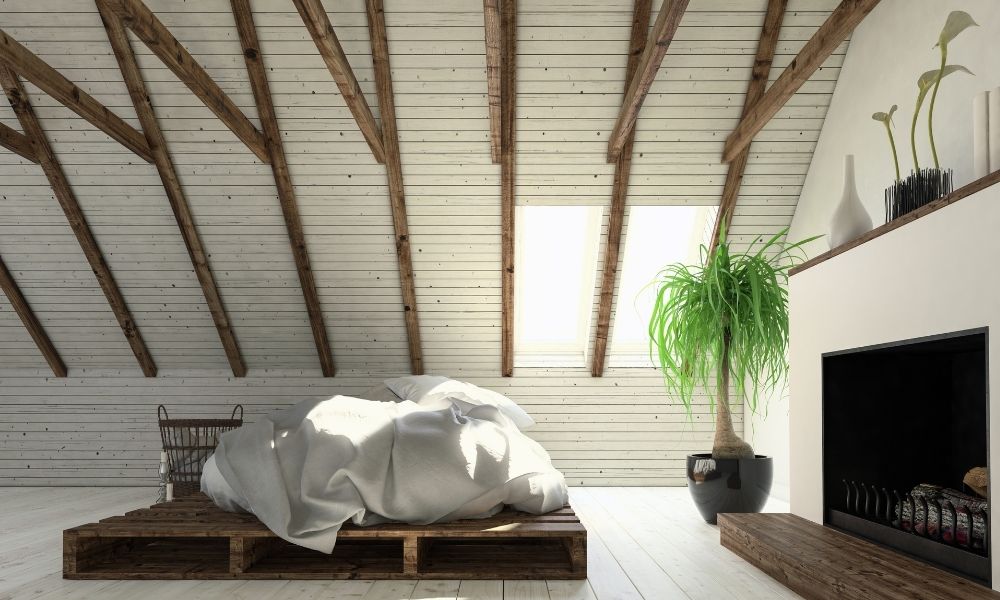
Do Indoor Palms Have Benefits?
Of course! The real question is: Is there a reason your house shouldn’t have indoor palm plants? The first benefit of indoor palms is the most obvious: They’re beautiful. Palm trees and indoor palm plants have a unique and bold look thanks to their evergreen leaves and interesting shapes.
For example, the Chinese Fan Palm has thin green leaves that form the shape of a fan, making for an interestingly fashioned plant. While the Areca Palm’s shape resembles a burst of green fireworks. Simply put, palms will become the striking focal point of any room with their large size and stunning appearance.
But palms are more than just beautiful. Many palm species are known to reduce indoor pollution, breaking down compounds like acetone, xylene, formaldehyde, and toluene found in your home or workspace. The Areca Palm was even part of NASA’s Clean Air Study!
Palms have another surprising way of improving your overall health and well-being. Plants with more surface area of leaves can produce more oxygen. Most palms have pretty giant leaves! And these sttriking appendages aren’t only beautiful but beneficial. They’ll increase the oxygen level indoors, making them great additions to smaller rooms that need to feel less stuffy.
Palms can also greatly improve your mood. The presence of plants in your home can reduce feelings of anxiety and depression, as well as fatigue. Keep one in your living room to motivate you to read or have a more relaxing yoga session.
How Long Do Indoor Palms Live?
Palm trees can live a very long time — between 70 and 100 years — when they’re in their native tropical environments in the wild. There’s no research online that discusses the lifespan of indoor palms but indoor palms won’t live as long as their outdoor counterparts. They also won’t usually bloom or grow flowers like they would in the wild.
One of the most popular indoor palm plants, Areca Palm, can live indoors for about 40 years. The Areca and Chinese Fan Palms have roughly the same lifespan. Others, like the Sago Palm, are able to live up to 200 years or more in the wild!
When it comes to growing an indoor palm, expect decades (or even a lifetime) of commitment. Some palms may even have to be rehomed once they grow too large for your space.
Where Are Indoor Palms Commonly Found?
Even though people picture palm plants in hotter climates like Southern California, they actually come from a wide variety of environments and countries throughout the world. That’s because there are a lot of different palm tree species (more on that in a moment).
There are two main areas that palm trees seem to originate from: The Indo-Atlantic and Pacific regions. Palms can be found throughout various regions of the Americas, India, Japan, Asia, Australia, and the South Pacific Islands.
But you’ll find the most palms between latitudes 30 degrees north and 30 degrees south. That’s because palms prefer tropical and subtropical climates. While hardier species may push those limits and expand into slightly hotter or cooler climates, this is the usual environment where palms thrive.
What Types of Indoor Palms Are There?
There are currently over 2,600 discovered species of palms across over 200 known genera. Palm trees come from the Arecaceae plant family, which are native to tropical and subtropical climates. A lot of them grow flowers, although it depends on the species and their environment.
Palm trees are usually identified by their size: Dwarf, small, and tall. The heights can vary immensely, from six feet tall (small) to 75 feet (tall, obviously) or more. Dwarf varieties live up to their name, growing up to just 3-4 feet in height. Most dwarf palms can even start their growing containers inside your house.
Some of the most popular varieties of palm trees are:
- Pygmy Date Palm
- Bottle Palm
- Canary Palm
- Triangle Palm
- Pindo Palm
- Christmas Palm
- Dwarf Majesty Palm
- Chinese Fan Palm
- Palmetto Palm
- Mexican Palm
- Sylvester Palm
Not every variety of palm can grow indoors. Some may have requirements that can’t be met in an indoor environment and are much too picky. Others grow way too tall to be kept inside in general. But there are a lot of popular palms that will thrive inside, giving your place a sense of vibrancy and positivity other plant types can’t provide.
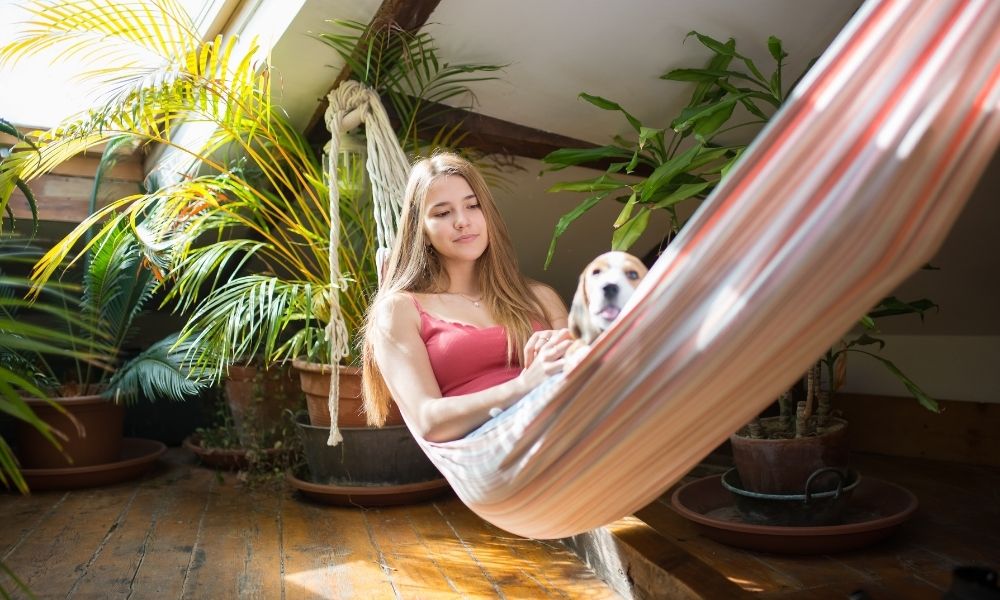
What Are the Best Indoor Palms?
While there’s a large variety of palms that can be grown indoors, there are just a handful of indoor palm trees that thrive specifically in this type of environment.
These palms are slow-growing and won’t become too large for your home any time soon (or at all). They are also easy to care for and aren’t as finicky as some other species. Here are the most popular indoor palm trees to consider for your space!
Fishtail Palm
This plant grows 10 feet indoors (not quite the 60 it can reach in its natural environment in Asia). Multiple green stems grow from the base, creating a “clump” style of growth. Provide them with bright, indirect sunlight as well as occasional misting to keep them happy.
Cascade Palm
Native to southern Mexican and Central America, the Cascade Palm (or Mexican Hat Palm) is used to growing near streams so they will need a lot of water. Thick with an abundance of lush, green, feathered leaves, the Cascade Palm can reach up to six feet tall inside. Keep them in a shady, moist environment inside your home.
Parlor Palm
This is one of the most popular palms because they are easy to grow indoors. Familiar Mexico and Guatemala, this palm grows slowly and does well in indirect light and average room temperature. They grow about four to six feet tall, boasting a cluster of smaller plants. Just remember to regularly mist them to keep their environment humid.
Majestic Palm
With its long, feather-like leaf pattern and dark green fronds, the Majestic Palm — originating in the tropical maritime climate of Madagascar — can make any room look vibrant and sophisticated. But it’s important to keep in mind that this palm is a bit picky. Place your palm, in all its majesty, in the kitchen or bathroom to give it the most humidity possible. Make sure to keep this large palm constantly moist.
Sago Palm
The stiff, dark green, glossy fronds and its short, shaggy trunk make the Sago Palm a visually striking plant that will immediately get everyone’s attention. While the trunk hangs very low in young plants, this plant can grow up to 20 feet tall. This is a slow-growing palm that can take up to 100 years to reach that height. Make sure to keep this vibrant palm away from pets since it can be pretty toxic.
Areca Palm
With its feathery fronds and bamboo-like trunks, the Areca Palm is one of the most popular indoor palm trees out there. It grows about six to 10 inches a year. The Madagascar native prefers bright, indirect light. Give it a moderate amount of water to keep it looking lush and lively.
Yucca Palm
Edged leaves make the Yucca Palm (or Stick Yucca) a very stunning palm that’s hard to ignore. are pointy the plant isn’t actually sharp so they’re safe to place just about anywhere. But make sure they are getting full sun or partial shade. The Yucca Palm, which is used to the weather in Mexico and Central America, is pretty drought tolerant.
Pygmy Date Plant
While Date Palms grow 75 feet tall, the Pygmy Date Palm grows only six to 12 feet. It can be grown in pots, making it ideal as an indoor palm. Native to Southern China, this mini tree has marrow and feathery leaves that can grow three to five feet. The Pygmy bolsters a deep dark green, all the way to its thin trunk. This plant is an easy-to-grow palm that prefers full sun and moist soil.
Ponytail Palm
Like its name suggests, the Ponytail Palm has a chunky trunk with curly leaves growing out of the top. Even though it’s actually a part of the Asparagus family, this plant is considered a “palm” due to its appearance. It’s easy to grow and a plant well-suited for beginners making it a great palm substitute. Give your Ponytail Palm bright indirect sunlight, dry soil between watering, and regular fertilizer feeding.
Kentia Palm
Thin stems and vibrant, long leaves make the Kentia Palm a popular indoor plant. Despite its high-maintenance appearance, the Kentia Palm is robust and versatile. It can tolerate a wide range of conditions and is easy to grow, being able to endure shady areas. Give it average humidity, basic room temperatures, and moderate watering.
Final Thoughts – Indoor Palms
With spiky, fan-like leaves and their eye-catching trunk shapes, indoor palm plants are unique houseplants that are unlike any other. They have a tropical and unique appeal that makes them hard to resist.
Although indoor palms grow slowly —on average, just six to 10 inches a year— the plant species can grow quite tall for a household. Though most indoor palms can grow up to three to six feet in height, some have the ability to get 20 feet tall!
From the thin and vibrant Kentia Palm to the lush green Sago Palm, there’s going to be a palm out there that works perfectly for your aesthetic, atmosphere, and schedule. Start with the list above and find the perfect indoor palm for your decor and lifestyle!


